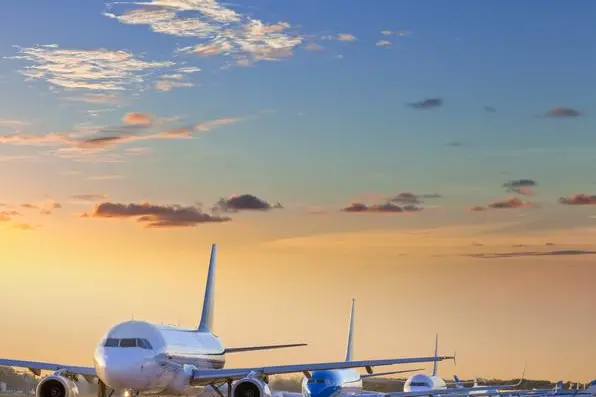PHOTO
The downturn in the Middle East’s aviation industry persisted with little respite in July despite attempts to reopen the economies, as most consumers continued to avoid air travel, the latest figures show.
Carriers in the Middle East saw demand for air travel, measured in revenue passenger kilometres (RPK), plunge by 93.3 percent year-on-year in July, according to the International Air Transport Association (IATA).
That is a slight improvement from the 96.1 percent demand drop in June, but it’s higher than the global average decline. The region’s capacity also tumbled 85.6 percent, while load factor sank 43.4 percentage points to 38 percent.
Across the world, demand continued at critically low levels, at 79.8 percent below July 2019 levels, which is also somewhat better than the 86.6 percent year-over-year decline recorded in June, primarily due to an increase in domestic air travel in markets like China and Russia.
“This is disappointing. It’s actually a little less than we had expected in our forecast, so clearly, there’s some downside risk to the forecast that we were talking about earlier. The reason for the weakness is essentially a lack of international travel,” Brian Pearce, chief economist at IATA, told reporters during a press briefing on Tuesday.
Alexandre de Juniac, IATA’s director general and CEO, noted that four in five travellers are still staying home and the travel industry remains “largely paralysed.” He added that governments’ inconsistent approach to curbing infections, such as reopening and then closing borders or removing and then re-imposing quarantines, isn’t encouraging many consumers to make travel plans.
IATA had earlier expected the industry to perform better in July, one of the traditionally busy months in the summer season.
“I was hoping that today we could report a strong northern summer season and with a clear vision to a recovery for aviation. Unfortunately, as Brian has presented, that is far from the industry’s reality today. Borders are largely closed. And government management of travel restrictions is so unpredictable and uncoordinated that people are still not flying,” said Juniac during the briefing.
“For the industry, this is immensely frustrating. It is also frustrating for travellers who cannot see family and loved ones, do business or take a break. And it is tragic for the growing numbers of unemployed whose livelihoods are being destroyed,” he added.
Air travel halted across the globe in March when the coronavirus lockdown was enforced. Passengers started trickling in only several weeks later when travel restrictions started to ease. In the UAE, airlines have gradually redeployed several of their aircraft across their network.
Emirates alone is expected to operate nearly 80 flights globally this month.
Decline in various markets
In Europe, demand for air travel in July toppled 87.1 percent compared to last year, up from a 96.7 percent drop in June, year-over-year. IATA said this reflects the relaxation of travel restrictions in the Schengen area.
In Asia Pacific, traffic in July was down 96.5 percent compared to last year, which is nearly unchanged from a 97.1 percent drop in June, and the steepest contraction among regions.
In North America, Africa and Latin America, carriers posted a 94.5 percent, 94.6 percent and 95 percent traffic decline, respectively.
(Reporting by Cleofe Maceda; editing by Seban Scaria)
Disclaimer: This article is provided for informational purposes only. The content does not provide tax, legal or investment advice or opinion regarding the suitability, value or profitability of any particular security, portfolio or investment strategy. Read our full disclaimer policy here.
© ZAWYA 2020












